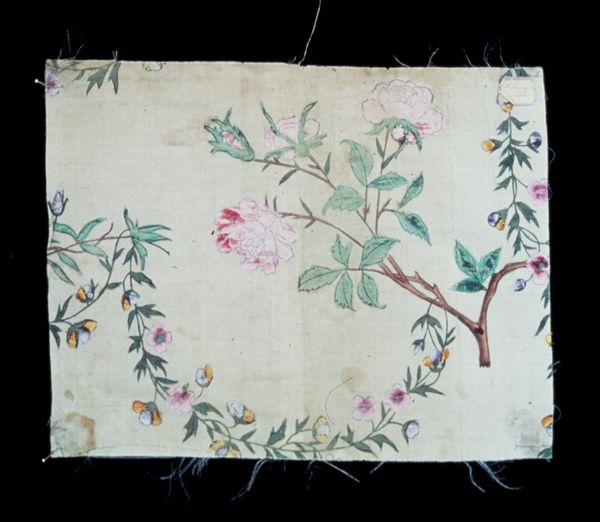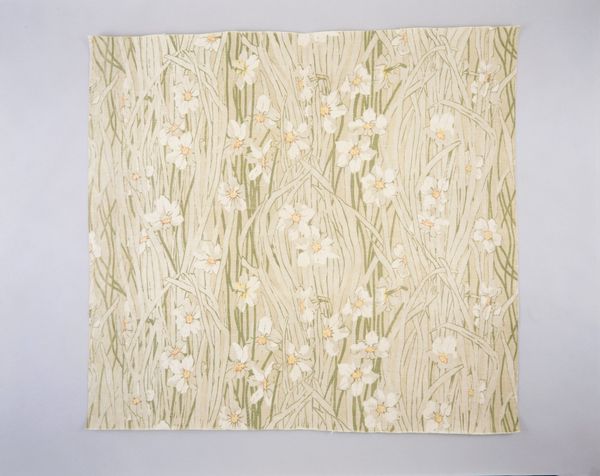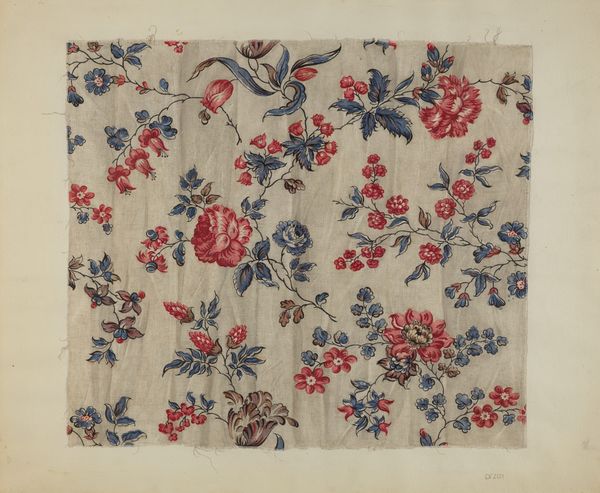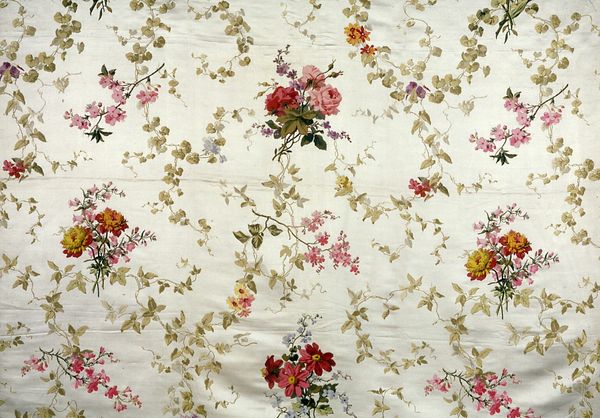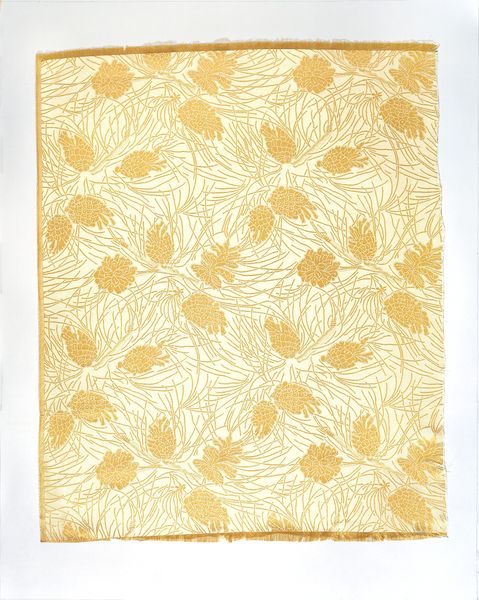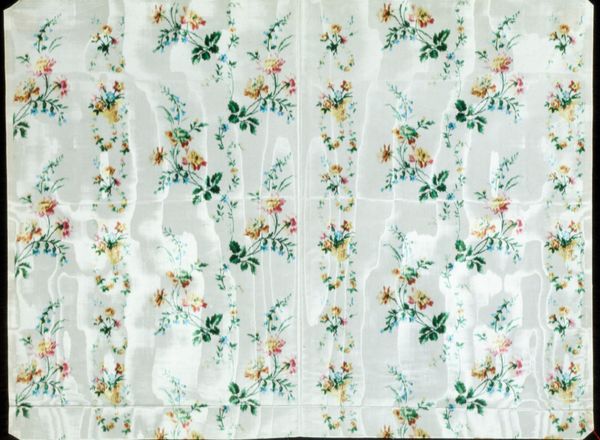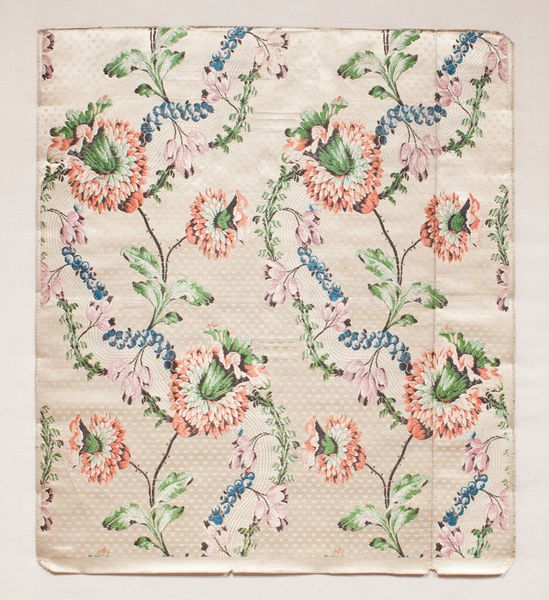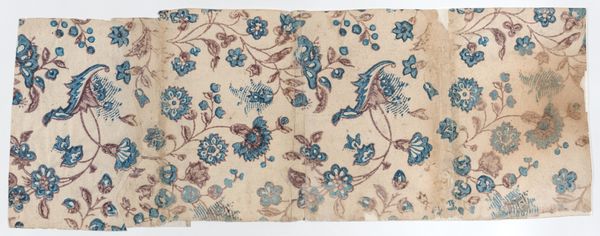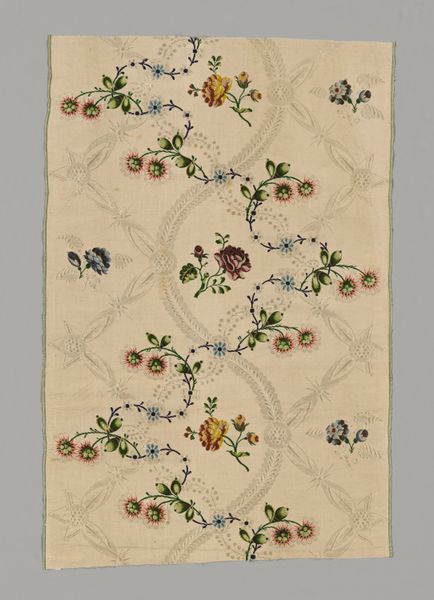
Dimensions: 87 3/4 x 70 5/8 in. (222.9 x 179.4 cm)
Copyright: Public Domain
Curator: This artwork, currently held at the Metropolitan Museum of Art, is an embroidered bed curtain dating back to 1742-1745. Editor: My immediate impression is one of delicacy. The faded colors and the airy composition create a soothing, almost dreamlike state. The craftsmanship on display is incredibly gentle. Curator: Indeed. Consider the distribution of forms. We have isolated, rather stylized floral motifs scattered across the main field, contained and organized by curvilinear botanical forms. A fascinating structural contrast, isn’t it? Editor: The floral imagery speaks volumes to its original audience. Notice the particular flower choices: I see roses, lilies, perhaps some stylized tulips. Each held symbolic weight for love, purity, and prosperity. They likely imbued the space it adorned with those associated meanings, for a gentle slumber. Curator: Precisely! The chromatic scale is restricted but highly considered. Subtle tonal modulations within each color family build depth and articulation, especially when assessed closely, suggesting careful manipulation of thread thickness and layering during embroidery. Editor: I find the repetitive use of floral patterns, each slightly different, adds an intensely personal feeling. It transforms the practical object into an intensely personal, artistic object – suggesting a domestic ritual steeped in visual symbolism. The cultural message is that of cultivated refinement but domesticity is the core message. Curator: I concur, but my eye returns again to the formal handling: a rigorous interplay between figure and ground where neither dominates fully. There’s no intended focal point, allowing our gaze to wander within the visual field which creates a specific perceptual experience. The interplay here supersedes the symbol, elevating our ability to see how intricate the hand work can be. Editor: A compelling point. The individual motifs serve as visual anchors, directing our attention while together speaking to a universal desire for comfort and well-being within a familial space. Each element strengthens that sense of personal touch. Curator: Ultimately, the artwork represents a fusion: careful, repeated aesthetic labor results in complex relations to make an impression far more striking than their component. The overall impression then rises above what can be felt. Editor: It's a window into a world where art was not confined to the gallery, but a daily reminder that could transform the act of repose. Thank you for such compelling insight!
Comments
No comments
Be the first to comment and join the conversation on the ultimate creative platform.
